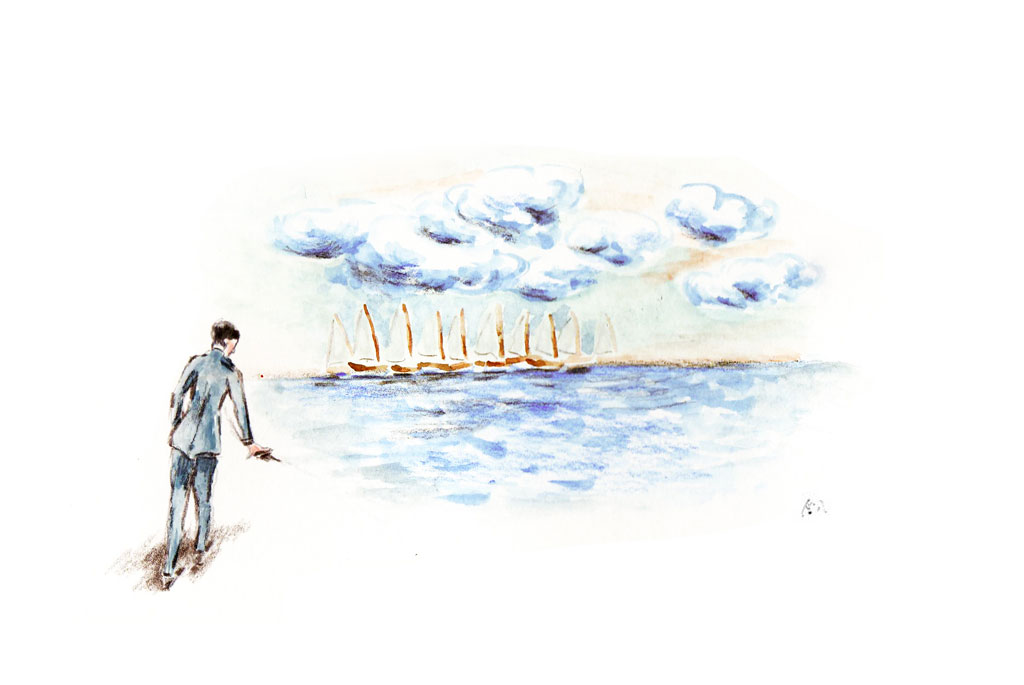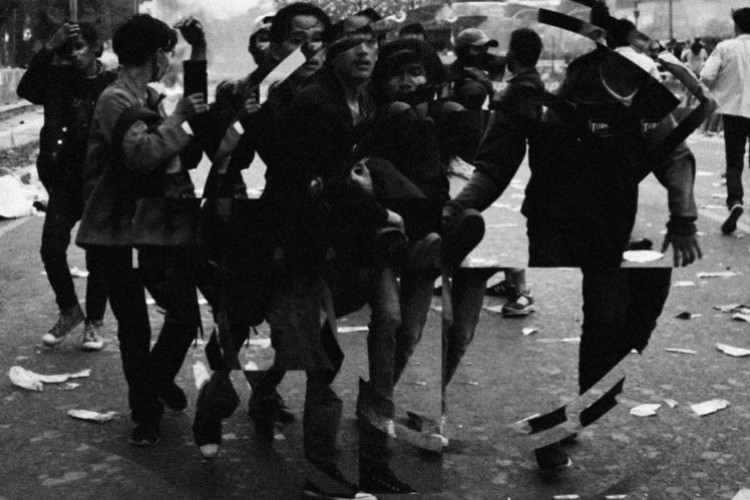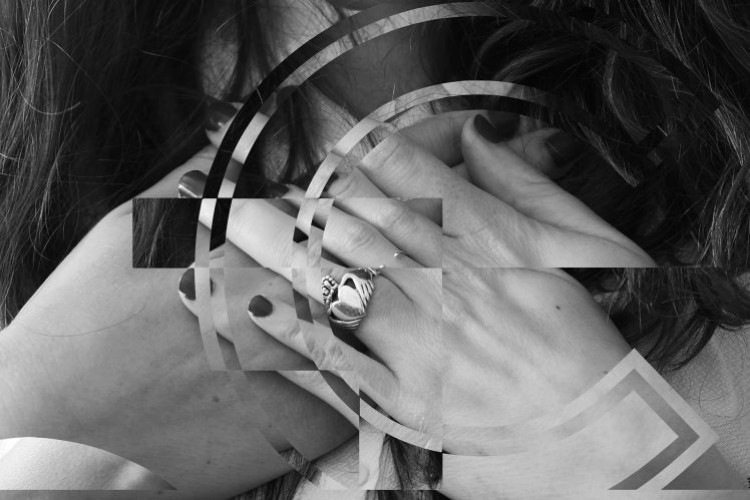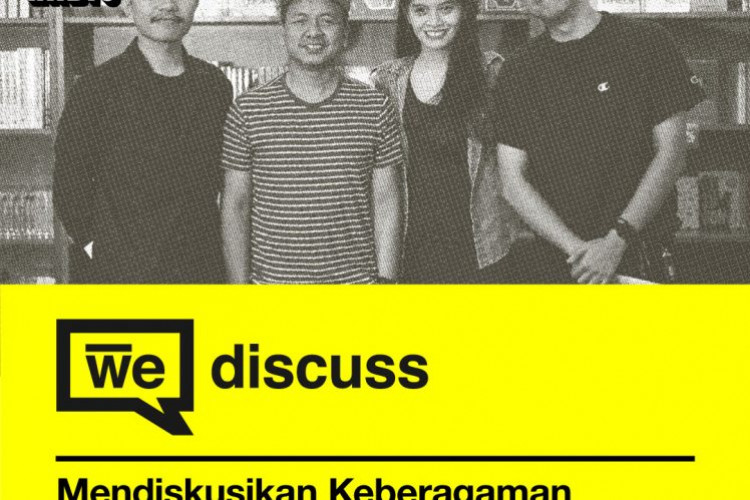
Like I said before, “curating” is an oddball profession that seems to resist any strict definition, and, listening to the proposals presented by participants at this month’s Young Curators Forum only proved this point even further. One thing is for sure; you’d be mistaken to think that we, the participants, were all equally interested in creating a straightforward exhibition as such. In fact, it was really quite interesting to see how each of us had different views as to what curatorial practice is, and what kind of activities this practice could create.
Since Rumah Seni Cemeti’s gallery is currently being used for an exhibition of their archives (curated by Farah Wardhani and Pitra Hutomo in collaboration with Indonesian Visual Art Archive), this last 4-day meeting of the forum (05 – 08 March 2013) was held at Taman Budaya and Universitas Gajah Mada, Jogjakarta instead. As before, figures from the Indonesian art world were invited as speakers for the first couple of days. Among them were young collector Tom Tandio, curator Hendro Wiyanto, and artists Agung Kurniawan, FX Harsono, Moelyono as well as Ade Darmawan. Discussions about the relation between artist-curators and the position of the artist within a community were surely thought-provoking, but I was more eager to see what was in store for the following days.
Although initially there were 16 of us, unfortunately only 12 were able to present their proposals in person. Out of these, 2 projects will be selected for exhibitions towards the end of the year, and 1 other will be realized as a research project also hosted by Cemeti. With this at stake, there was little wonder why nerves were running wild on a few of us on those presentation days, myself included.
Ignatia Nilu (Director of Langgeng Art Foundation) and Riksa Afianty (staff for the forthcoming OK. Video Festival) were both interested in street or public art. Riksa’s project was geared towards bringing street art into the gallery in the form of a retrospective of the works of Indonesian street artists from 2005 – 2012. Nilu, however, was interested in organizing a kind of public/ street art exhibition around the theme of “Sego Segawe” or the car-free day initiative in Jogjakarta. She mentioned conducting a mural intervention on the bike lanes, but added that this was subject to change.
The majority of us were drawn to the notion of history, and I was intrigued by the different interpretations we have on it. It seemed to me that the main question we were dealing with was, how do we represent history through a curatorial project? Chabib Duto Hapsoro (Selasar Sunaryo Art Space), who is currently undergoing a research project on the “Bandung School” group of the ‘70s, Decenta, is planning to create an exhibition of the rare archives that has come into his hands. Grace Samboh (Hyphen) did not have an exhibition in mind, but a project for a website containing a timeline of Indonesian visual art works, to be selected by the method of questionnaire. Unlike these two, Brigitta Isabella (KUNCI Centre for Cultural Studies) proposed to create an exhibition by teaming up one young artist with one specific movement from Indonesian art history, from the LEKRA and Persagi days to the current period of “alternative spaces”.Adding to this mix was my idea of “condensing” the 25-year history of Cemeti into a performative exhibition project that will last for 25 hours and 25 days.
For Syafiatudina (KUNCI Centre for Cultural Studies) and M. G. Priggonoto (Serrum), knowledge and education was a strong point of interest. M. G. planned to organize a residency program for artists in a selected high school, driven by the curiosity as to what fruits the interaction between artists with students and teachers could bear.
Dina’s ambitious project wanted to demystify the working process of artists, by turning the Cemeti gallery space into a kind of laboratory in which the various tools used by artists to work are displayed, and visitors are encouraged to interact with them. The point was to test whether artists may engage in a public production of knowledge, or whether this kind of knowledge-production was private only to the artists themselves.
Invani Lela (Ketjil Bergerak) was keen to explore whether or not the traditional and the new may commingle in contemporary art projects; she brought up the Javanese metaphysical philosophy of “Sedulur Papat Lima Pancer” to frame an exhibition at the town centre (alun-alun) of Jogja. Mira Asriningtyas (Lir)’s project also revolved around a strong affinity to the local, this time to the area of Kaliurang, which is her hometown. Largely research-based, her project relies on the participation of no only artists but also writers, filmmakers, and researchers.
The proposals given by Annisa Rahadi, Sally Texania, and Adhisuryo (Iwan), all from Institut Teknologi Bandung, turn this already heady mixture of creative ideas even more potent. Annisa, with her concern over the lack of material experimentation among her fellow young artists; Sally, who wanted to create an exchange-programme between collector-artists or the Bandung-Jogja schools; and Iwan’s idea for creating a labyrinthine sculpture in which to display artworks.
The jurors – Alia Swastika, Nindityo Purnomo, Mella Jaarsma, Agung Kurniawan and Ade Darmawan – kept an overall jovial mood while expounding sharp, critical commentaries towards the proposals. At least for me, two comments stood out. The first is about how the emphasis on “knowledge-production” often leads to a neglect over the “exhibition-making” aspect of curatorial practice. What I mean by this is that curatorial practice is essentially a creative act, and that although it carries the responsibility to respond to social concerns or to take a political stance, it also has the responsibility to create an imaginative, inspiring event.
The second was the importance of what I take to be a “curatorial vision”. By this, I mean to refer to the difficulty in turning or translating philosophical musings and intellectual claims into a curatorial project, whatever that project may be. How do you imagine the space to be? What would it look like? What would be in it? Is time a factor? Is audience participation a factor? What kind of atmosphere do you want to create?
In the beginning, I refrained myself from speculating as to what my new curatorial friends had in mind. Sure, we had our discussions, but it was only when we presented our proposals that the differences between our interests and approaches became distinctly pronounced. Needless to say, the diverse range of ideas was impressive. For the most part, the projects were fresh takes on what curatorial practice could be in Indonesia, and thinking back on this experience, there was, in a way, a sense that the art world is really our ocean. Sharks aside, I think we’re in for an exciting voyage.











